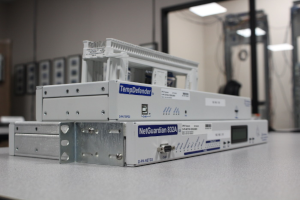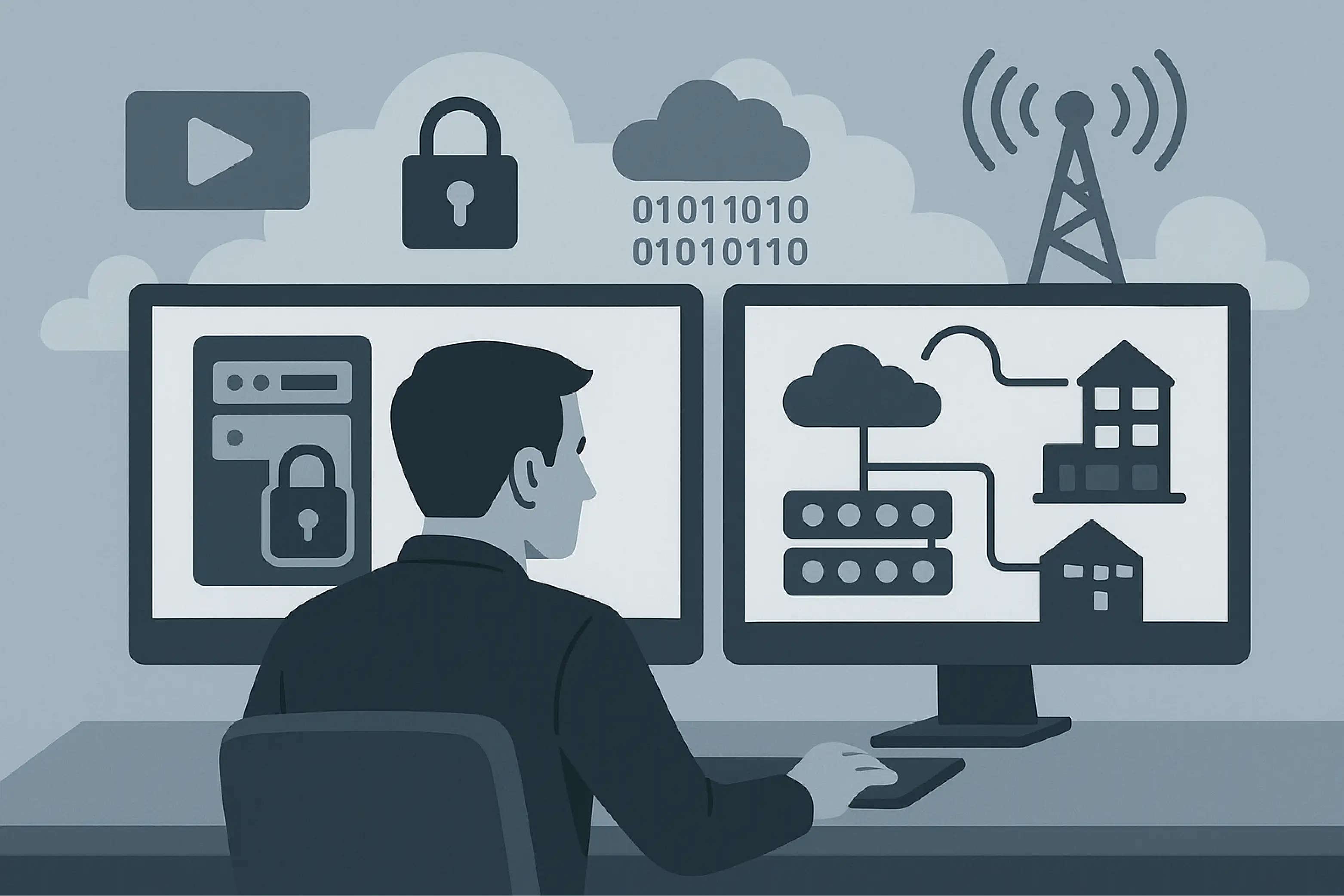Check out our White Paper Series!
A complete library of helpful advice and survival guides for every aspect of system monitoring and control.
1-800-693-0351
Have a specific question? Ask our team of expert engineers and get a specific answer!
Sign up for the next DPS Factory Training!

Whether you're new to our equipment or you've used it for years, DPS factory training is the best way to get more from your monitoring.
Reserve Your Seat Today"Our DPS infrastructure is showing its age - about 15 years - but that's pretty impressive in the long run." - Client
That line opened a candid conversation with a regional telecom team that runs a large network of unmanned sites. Their remote monitoring gear (NetGuardian RTUs, mostly) has served them well for well over a decade, which is exactly what you want from critical infrastructure.
But longevity carries a hidden cost eventually: interfaces get clunky, firmware lags, and security practices fall behind a world that keeps changing.
I'm going to distill key points from that meeting into a practical field guide for you. You'll see what the team was experiencing, how we mapped their concerns to concrete steps, and how the core principles from my book 100% Uptime - collect broadly, distribute promptly, automate the obvious, and log/tune - translate into a modernization plan you can actually execute.

New personnel inherit "binder knowledge" - and sometimes literal binders.
Client: "I have a really old book that looks like a bunch of DOS prompts. Do you have a current PDF equivalent?"
That question pops up often when senior staff rotate and new hires arrive. Paper manuals and CLI screenshots don't onboard people well in 2025. What works better is a blended approach:
As I said on the call: "The goal of our modern interfaces is to be more intuitive. We made a startup guide for installation and for the basics of the interface." Documentation becomes a force multiplier when it's concise, searchable, and aligned with how your people actually work.
Modernization doesn't have to mean throwing everything out. This client team's most visible pain was the older web interface:
Andrew: "The G5 and earlier were showing their age with frames and constant recurring refreshes to show new alarms. The G6 is a big leap forward."
The practical path we recommended - especially for large footprints - is incremental adoption:
This is classic "eat the elephant one bite at a time." You raise the floor with each new deployment while postponing costly full-site rewires until they're truly necessary.
The clients were clear and specific during our meeting:
Client: "We'd love to virtualize. How do we keep the Linux system patched up to date?"
Client: "I'm looking for SNMPv3 support without an add‑in module."
They also flagged physical access control:
Client: "We have door readers at most offices. Are there newer technologies rather than key cards that are easily cloned?"
This is where the IT/OT hybrid reality becomes real. You want virtualization for flexibility and disaster recovery, patch management that won't brick your NMS, SNMPv3 for authenticated, encrypted telemetry, and modern badge tech so a cloned card can't walk through your front door.
On the call, we discussed our in-house work toward virtualization and our general approach to OS security updates: test, verify, then deploy deliberately. Security should never break reliability. The right process is:
Many networks run a "museum of protocols" collected over decades: serial one-offs, aging rectifiers, orphaned controllers. You can't replace it all this quarter, but you also can't leave it unmonitored.
Andrew: "If you have a big device that isn't playing nice, we can usually build a mediator to make it work on your network in 2025."
Client: "So when we have legacy copper serving equipment we can no longer get, we can reach out to you?"
Exactly. There are two proven patterns:
Your goal is continuity without chaos. You maintain visibility and control now, then schedule replacements when budgets and staffing allow.
When firmware lags by years, gremlins creep in. The team admitted some units were still on very old releases. We also discussed a historical issue where network scanners could knock older devices off balance.
Client: "How often should we look at firmware updates? Are there features we should consider on the older G5s?"
My general guidance: most firmware updates add features or fix issues; security-critical ones are less frequent on stable RTUs but do exist. Don't treat firmware like "set it and forget it." Put lightweight governance around it:
The fastest way to cut risk is often a weekend of inventory and targeted upgrades.
Old badges and unencrypted readers are a soft target:
Client: "A Flipper picks up the old badges instantly. I've watched it live."
Moving to encrypted credentials and readers closes an easy door for intruders. And once you refresh the readers, you can consider virtual/mobile credentials to reduce card management overhead. This isn't separate from monitoring. It's one of the four domains (security, power, environment, RF) that you should view holistically:
Everything we've discussed here maps cleanly to the core practices you should expect from a modern monitoring program.
Don't stop at "major/minor." Pull discrete contacts, analogs, and protocol data (SNMP/Modbus/DNP3/TL1) into the same RTU/master. Add start‑battery analogs for generators, rectifier/battery voltage trends, temperature and airflow, door/motion, and RF forward/reflected power. Breadth turns one-line alarms into a "causal story" you can act on.
Route the right message to the right person at the right moment: NMS/map view for dispatch, email/SMS/mobile web for field, escalation for unacknowledged criticals. Include response instructions in the message ("If X, check Y; bring Z"). That's how you scale expertise to new team members, even when something randomly fails at 2AM on an idle Tuesday.
Handle routine patterns in seconds instead of minutes: "AND" commercial power fail with low battery to start the generator; limit HVAC units on generator; tie comfort mode to motion and auto‑timeout. Automation doesn't replace judgment, but it buys you time to react properly.
Trend HVAC cycles, airflow, start-battery curves, rectifier voltages. Prune noisy points and adjust thresholds so pages are rare and actionable. Small monthly reviews drive down OpEx and prevent the "second incident" from becoming your motivator.
Here's how I'd convert this conversation into action for any relatively large footprint:
The team on our call had to juggle all the realities you probably face: a big map, limited staffing, customer expectations, and security scrutiny. They weren't asking for a moonshot. They wanted a path that keeps the network stable while steadily improving it.
Client: "We need to onboard a new tech with study material and help them get productive."
Client: "We'd love virtualization and better patching. We also want SNMPv3, and to get away from badges that can be cloned."
Client: "How often should we look at firmware updates on the older G5s?"
Those are exactly the right questions. The answers are practical and affordable when you sequence them properly:
As I like to remind my clients, the advantage of a vertically integrated manufacturer is speed:
Andrew: "The advantage of keeping engineers on site is flexibility. If we can do something that saves you time and urgency, that's good."
That flexibility matters when you hit oddball edge cases or when an audit demands a specific capability. You don't want to start from zero every time.
In another conversation earlier this year, I joked about how often quotes resurface after a second outage: "We'll do a quote, and sometimes it just sits until the powers that be get a shock to the system. I once had somebody blow the dust off an eight‑year‑old quote."
You don't need a second event. If this client's situation sounds familiar - aging but reliable gear, a push toward virtualization and SNMPv3, legacy devices you can't yank tomorrow, and access control that needs a refresh - you have a clear path:
Do that, and you'll reduce surprise outages, shorten after‑hours calls, and make onboarding smoother for the next tech. Most importantly, you'll put your team back in control.

Andrew Erickson
Andrew Erickson is an Application Engineer at DPS Telecom, a manufacturer of semi-custom remote alarm monitoring systems based in Fresno, California. Andrew brings more than 18 years of experience building site monitoring solutions, developing intuitive user interfaces and documentation, and opt...